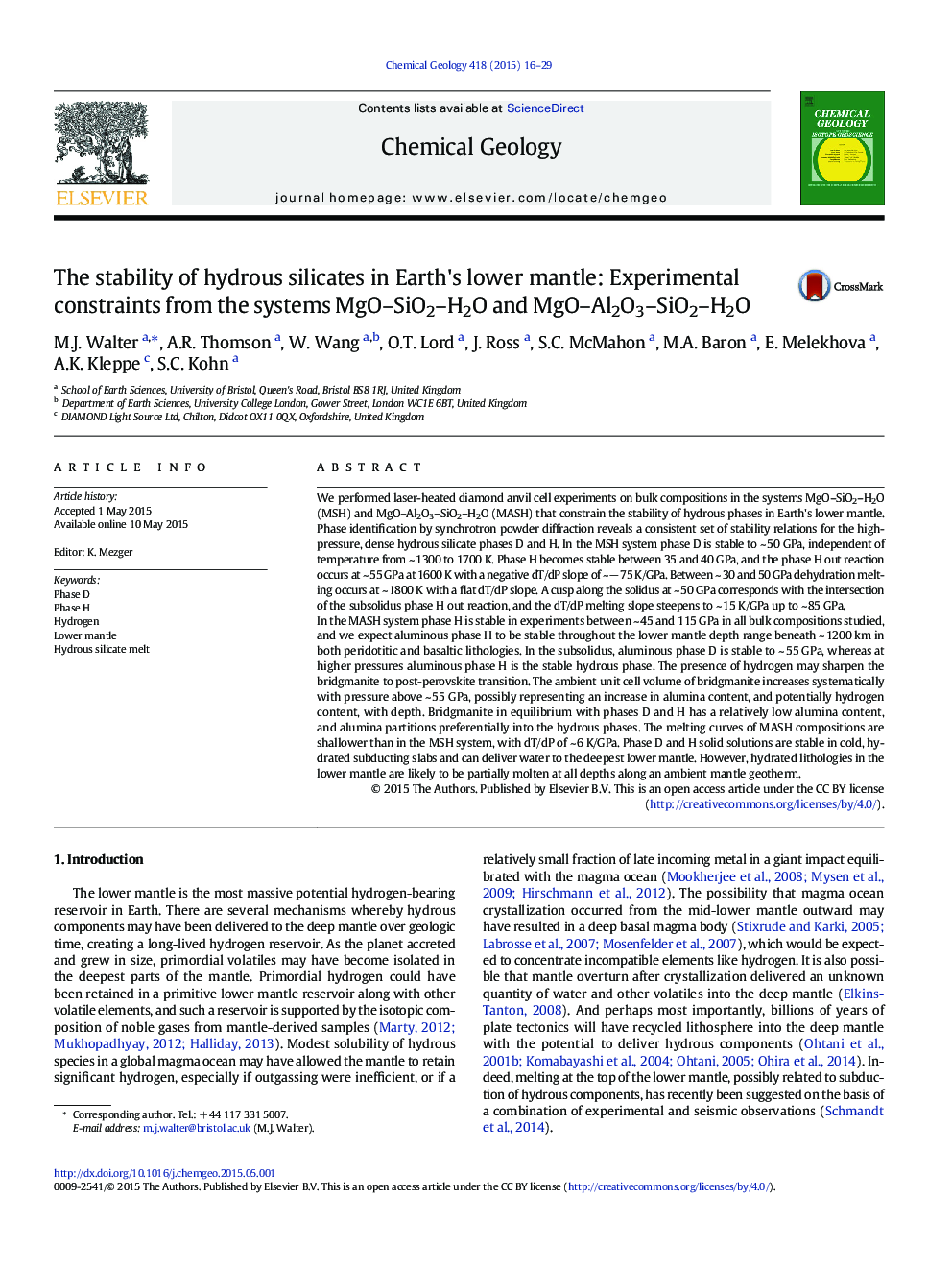| کد مقاله | کد نشریه | سال انتشار | مقاله انگلیسی | نسخه تمام متن |
|---|---|---|---|---|
| 6436187 | 1637556 | 2015 | 14 صفحه PDF | دانلود رایگان |

- Along a cold subduction geotherm an aluminous hydrous phase, either D or H, will be stable throughout the lower mantle.
- Aluminous phase H can be stable in lower mantle lithologies at depths from ~Â 1200Â km to the core-mantle boundary.
- Along a lower mantle adiabat a hydrous melt will be stable once the storage capacity of the mantle has been exceeded.
We performed laser-heated diamond anvil cell experiments on bulk compositions in the systems MgO-SiO2-H2O (MSH) and MgO-Al2O3-SiO2-H2O (MASH) that constrain the stability of hydrous phases in Earth's lower mantle. Phase identification by synchrotron powder diffraction reveals a consistent set of stability relations for the high-pressure, dense hydrous silicate phases D and H. In the MSH system phase D is stable to ~ 50 GPa, independent of temperature from ~ 1300 to 1700 K. Phase H becomes stable between 35 and 40 GPa, and the phase H out reaction occurs at ~ 55 GPa at 1600 K with a negative dT/dP slope of ~â 75 K/GPa. Between ~ 30 and 50 GPa dehydration melting occurs at ~ 1800 K with a flat dT/dP slope. A cusp along the solidus at ~ 50 GPa corresponds with the intersection of the subsolidus phase H out reaction, and the dT/dP melting slope steepens to ~ 15 K/GPa up to ~ 85 GPa.In the MASH system phase H is stable in experiments between ~ 45 and 115 GPa in all bulk compositions studied, and we expect aluminous phase H to be stable throughout the lower mantle depth range beneath ~ 1200 km in both peridotitic and basaltic lithologies. In the subsolidus, aluminous phase D is stable to ~ 55 GPa, whereas at higher pressures aluminous phase H is the stable hydrous phase. The presence of hydrogen may sharpen the bridgmanite to post-perovskite transition. The ambient unit cell volume of bridgmanite increases systematically with pressure above ~ 55 GPa, possibly representing an increase in alumina content, and potentially hydrogen content, with depth. Bridgmanite in equilibrium with phases D and H has a relatively low alumina content, and alumina partitions preferentially into the hydrous phases. The melting curves of MASH compositions are shallower than in the MSH system, with dT/dP of ~ 6 K/GPa. Phase D and H solid solutions are stable in cold, hydrated subducting slabs and can deliver water to the deepest lower mantle. However, hydrated lithologies in the lower mantle are likely to be partially molten at all depths along an ambient mantle geotherm.
Journal: Chemical Geology - Volume 418, 15 December 2015, Pages 16-29